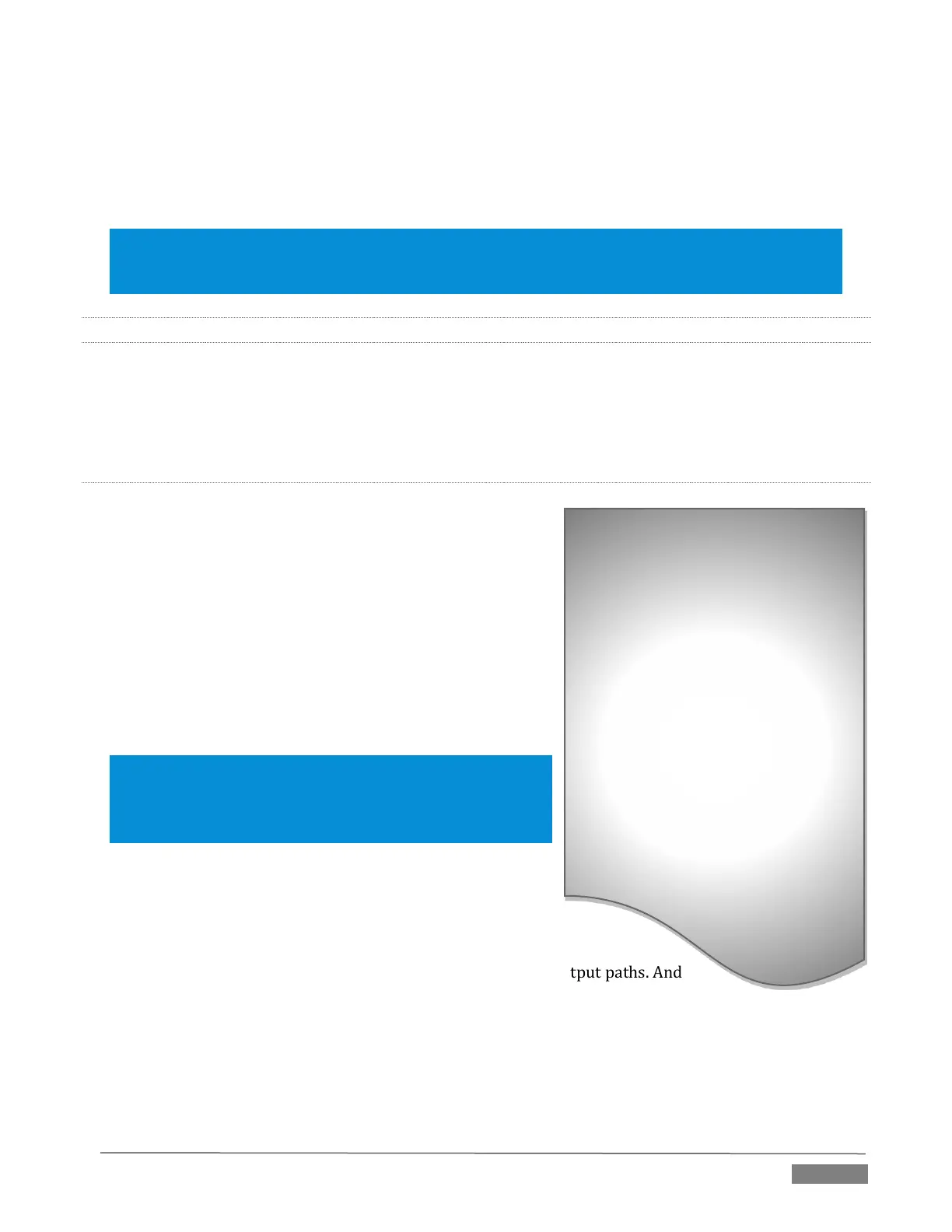Page | 163
Sliding Pan for channel 1 all the way to the right results in that source only being audible on channel
2, removing it completely from its original channel.
Pan also modulates the sound levels on the left and right channels so that the overall volume neither rises
nor drops as a result of adjustments.
Hint: “Pan” is not the same as “Balance”. The balance control in a stereo system varies the relative level
of the left and right channels, but sound from the left channel will never come out of the right speaker, or
vice versa (whereas Pan does permit this to occur).
15.7.3 ROUTING
A main tab labeled Routing appears Configuration panel for all sources. The controls in this group determine
output routing of the stereo pair(s) comprising the input group. Switches let you send input channels 1-4 to
different channels on the internal audio buses maintained by TriCaster. Let’s talk about what an audio bus
is and how it is useful before proceeding.
BUSSES AND OUTPUTS
Consider a very basic audio mixer. Its main audio signal path,
from input to output, is properly called the ‘master bus.’ Sound
supplied to one or more inputs is placed on this master bus (in
the jargon of audio processing, this is called a ‘send’), which
ultimately flows to output connectors.
Slightly more advanced mixers often provide more than one
‘send’ for individual inputs. For example, the sound from all
inputs may be sent to the master bus, comprising the ‘master
mix’. A different mix, sometimes called a ‘sub-mix’, might also be
created by sending certain signals to a secondary (‘auxiliary’, or
‘Aux’) bus.
Hint: A secondary mix, prepared on an Aux bus, can serve many
purposes. For example, you might wish to record a mix with all
sound from talent microphones but that excludes any sound
effects or music.
Let’s summarize what we have learned so far: A ‘send’ pipes
audio signals from an input to a discrete pathway called a ‘bus’.
Multiple sends can be used to place sound from a given source
onto one or more internal busses. What else should we know?
Each audio bus is discrete. Each can be directed along different output paths. And
even when the blend of signals it carries is otherwise identical to another bus, it can be
processed separately; its level, equalization, and compressor/limiter settings can be unique.
TriCaster provides four primary audio busses. These are identified in the Audio Mixer as:
Master
AUX 1, 2 and 3
Secondary audio busses:
Actually, beyond the primary busses
mentioned here, TriCaster maintains
a large number of secondary internal
busses.
For example, the Solo switch for each
input (and output) is actually a ‘send’
that adds sound to a ‘Solo bus’.
Likewise, the IsoCorder™ module (on
supporting models) permits discrete
recording directly from the
unmodified audio input associated
with any single video source; really,
this constitutes another up to eight
additional audio busses.

